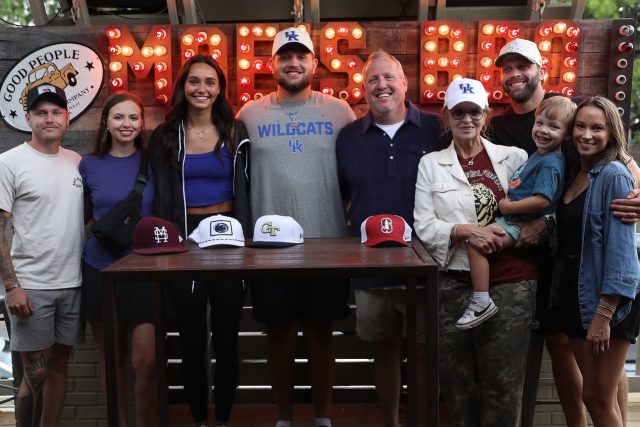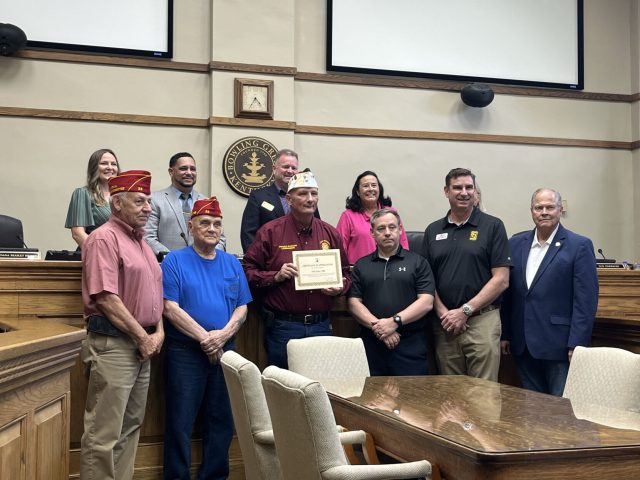A Vietnam vet is buried at Arlington National Cemetery after decades in a run-down graveyard
Published 12:00 am Sunday, August 11, 2019
ARLINGTON, Va. – She met him, but she never knew him.
Lamonda Williams was only 11 months old when her father, Pfc. Lamar Williams, was killed April 13, 1971, in Vietnam.
Trending
Since then, her father, who posthumously received a Purple Hart and Bronze Star, has always been a mythical figure in his daughter’s life. She felt his absence as she moved from one milestone to the next, first college, then graduate school, then developing television shows for the A&E network, and ultimately hosting a popular satellite radio show on SiriusXM.
But her biggest achievement to date might be the one that would make her father the proudest: She got his remains exhumed from a run-down graveyard in his hometown of St. Augustine, Fla., after persuading Arlington National Cemetery that he deserved a place on its august grounds.
On Wednesday, Lamonda – along with her widowed mother, Carolyn Williams, 69, and Lamar’s 90-year-old mother, Zethel Surrency – sat side by side, facing their loved one’s flag-draped coffin in section 57 of Arlington, steps away from gravesite 296, his final resting place.
Thanks to Lamonda, her father was buried with military honors: a rifle volley by six soldiers, a bugler playing taps and three folded U.S. flags for Lamar’s mother, widow and daughter.
Afterward, the family waited for the burial crew to arrive, then watched as small trucks dumped dirt over Lamar’s gleaming casket.
“We got him out of there,” Lamonda, 49, said triumphantly, referring to the Woodlawn Cemetery in St. Augustine, where local news outlets have reported that headstones appear sunken or overrun with weeds. “It’s sad because I lost my father. But I’m also celebratory and ecstatic because he’s in his rightful place.
Trending
“He’s finally home.”
Lamonda grew up hungry to learn everything she could about her father, treasuring every detail. Her mother, her grandmother and her father’s three siblings all told her stories.
She heard about his love for his baby-blue 1963 Plymouth Fury convertible and how he buckled her into the car seat and rode her around town with the top down.
“My grandmother told me that he’d lift me up on his shoulders and take me to the corner store to get me ice cream,” Lamonda said. “When I heard that, I completely balled because when I have a craving for ice cream, it always hits me like a ton of bricks. I believe it’s my soul and spirit trying to connect back to something familiar.”
He attended R.J. Murray High School in the 1960s and spent the summers working at a motor lodge and restaurant. He liked saving money so he could buy shoes and that Plymouth Fury.
“It wasn’t for vanity purposes,” Lamonda said. “He always aspired to rise out of his environment.”
Lamonda loved the story of her parents’ romance: He met her at the end of his junior year in 1967, when a mutual friend was headed to Daytona Beach, about 50 miles south of St. Augustine, and asked him to come along. At first, Lamar wasn’t into it. Then his friend showed him a photo of Carolyn. His reluctance turned into an instant yes.
Their courtship was intense: They took long strolls along Daytona Beach’s boardwalk and attended concerts at the city’s amphitheater, the Bandshell. Their first movie date: “To Sir, With Love” starring Sidney Poitier. And they loved dancing, especially to “La La Means I Love You” by the Delfonics and anything by Marvin Gaye or Aretha Franklin.
He proposed while they were riding a roller coaster in Daytona Beach. Amid all the frightening screams, it was her turn to give an instant yes. On Jan. 12, 1969, they got married at Carolyn’s parents’ home on a Sunday evening.
Soon, she was pregnant with their first child. But then, the draft notice arrived. He asked whether he could postpone his report-to-duty date until his daughter was born, and the military said it was OK.
Lamonda was born May 6, 1970. Then he was off to the Army, deploying Jan. 11, 1971, to Vietnam.
But, almost exactly three months later, shortly after his 21st birthday, he was killed by enemy fire.
His remains were flown back to Florida.
Lamonda said her family tried burying him at two other cemeteries in St. Augustine, but they were turned down, she believes, because the family is African American. Instead, they settled on Woodlawn Cemetery, a historically black graveyard that later fell on hard times.
Over the years, two things nagged at Lamonda: Was it possible to exhume his casket in Florida and bury him at Arlington, the country’s most prestigious resting place for U.S. service members? Also, how exactly did her dad die in the first place?
She lobbied Arlington for more than a year, and the military finally agreed in May, she said.
Two months later, the family exhumed his casket from Woodlawn, allowing a local NBC affiliate, First Coast News, to document the cemetery’s decrepitude and film the removal. The segment showed Lamonda wearing rubber boots and threading her way to her father’s headstone, which was covered in grass.
“This is unacceptable,” she told the camera crew.
Shortly afterward, Hollie Thompson, an elderly care worker in Pittsburgh, came across a news article in her Facebook feed about a soldier named Lamar Williams getting exhumed and reburied at Arlington.
For years, she had heard of a person named Lamar Longo Williams because that was the soldier her father, Fran Spohn, a retired baker, had frequently talked about from his own Vietnam deployment. The family always wanted to find Lamar’s relatives. Could this be the same one? She watched the segment and saw his headstone showing his first, middle and last names. It had to be her father’s comrade.
She tracked down Lamonda on Facebook and told her the news: Her father was with Lamar when he died.
“Hollie, I can barely type a reply fighting through the tears. Oh my God, this is amazing!!” she wrote. “What a miracle to receive this note!!”
Spohn told her everything: Lamar was leading a squadron up a hilltop in a valley bordering Laos when he came under fire from Viet Cong fighters on an adjacent hill. Spohn was about 10 meters behind him when he saw Lamar get hit by a rocket-propelled grenade. His left leg was blown off, and so was part of his right.
He yelled for help and a medic, but he died within several minutes.
On Wednesday, Spohn, his wife and daughter traveled to Arlington to pay their respects. They stood over Lamar’s casket, their eyes welling up. After the ceremony, the Spohns went through the receiving line, greeting Lamar’s mother, his widow and finally Lamonda.
Thank you, she told him.






